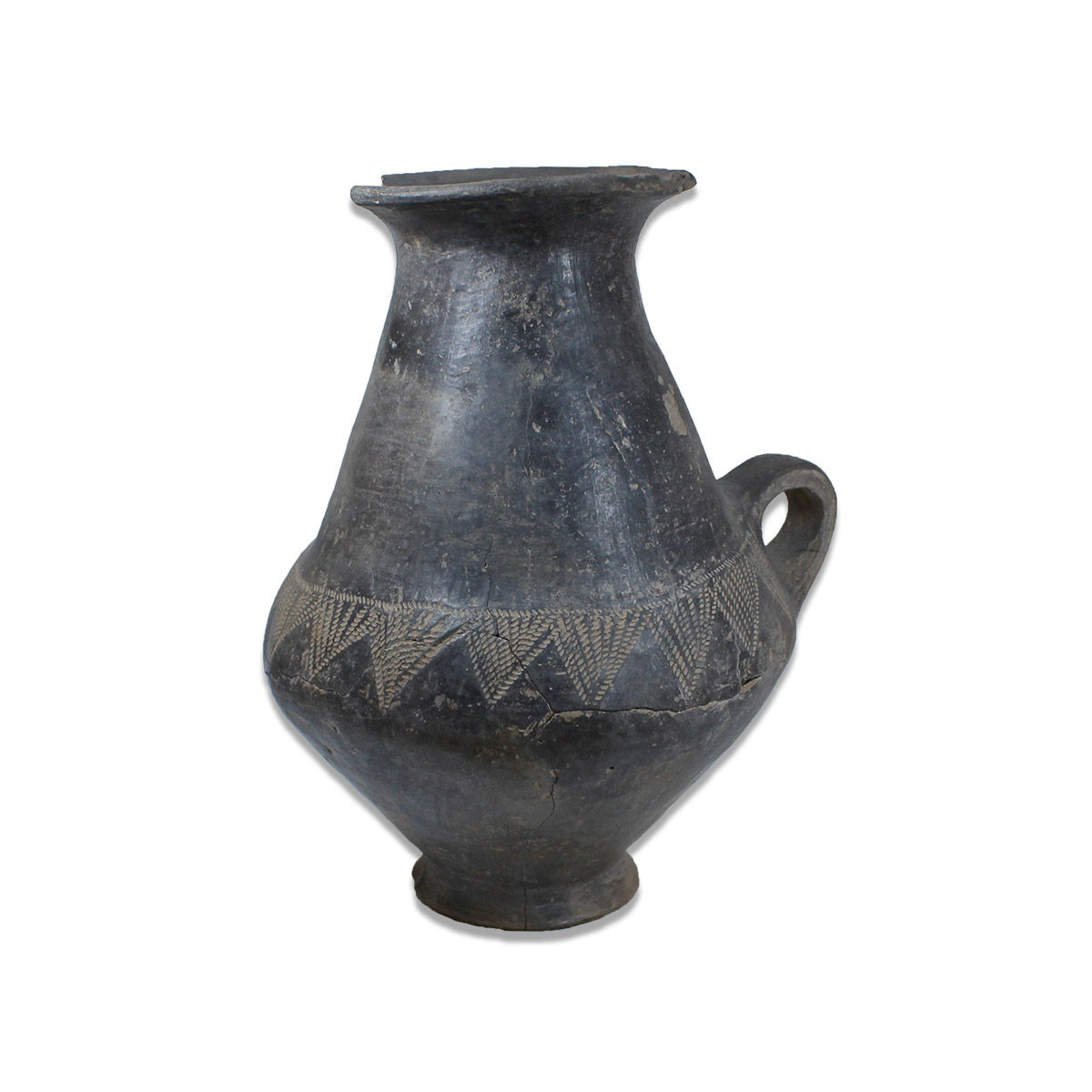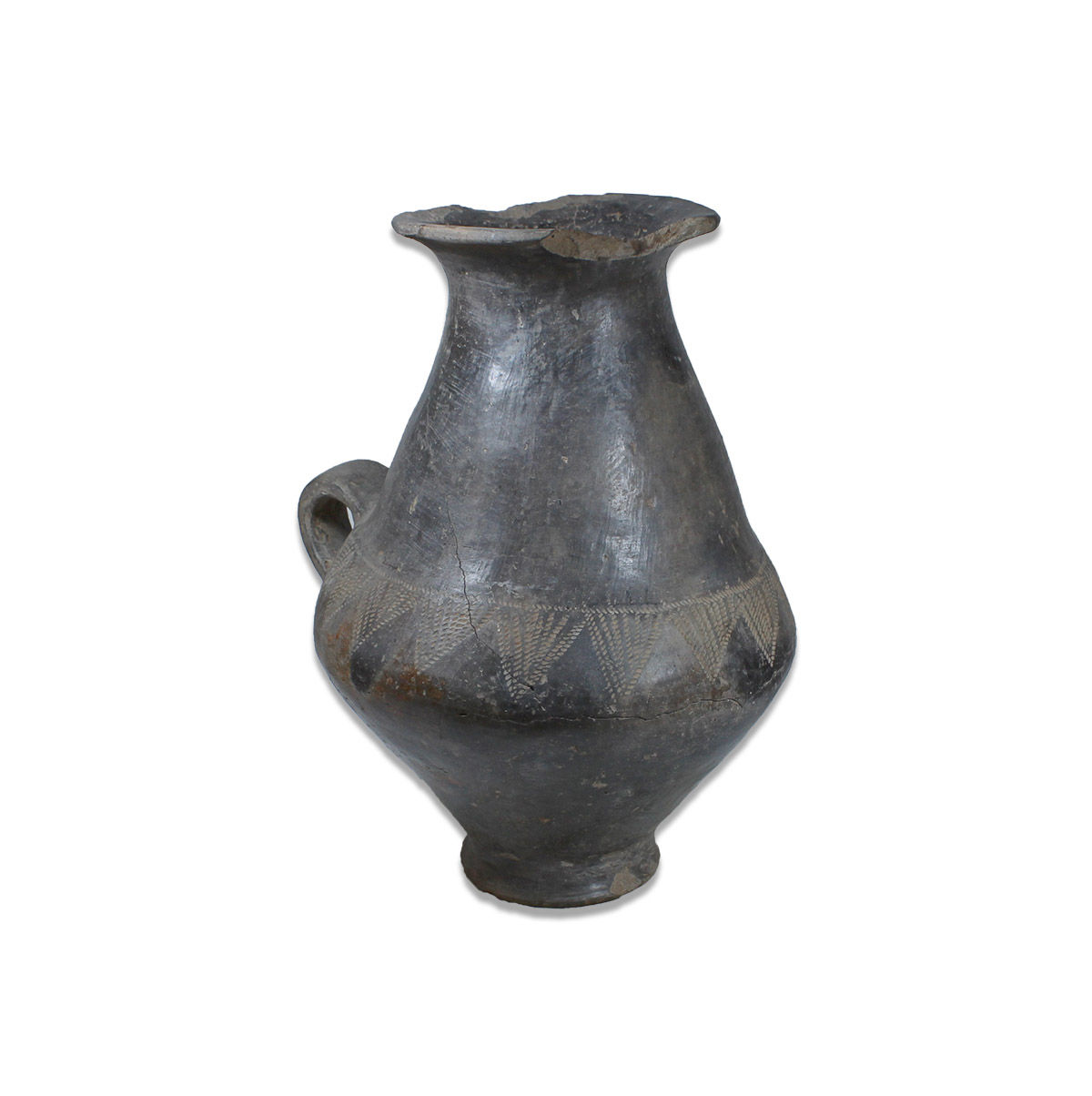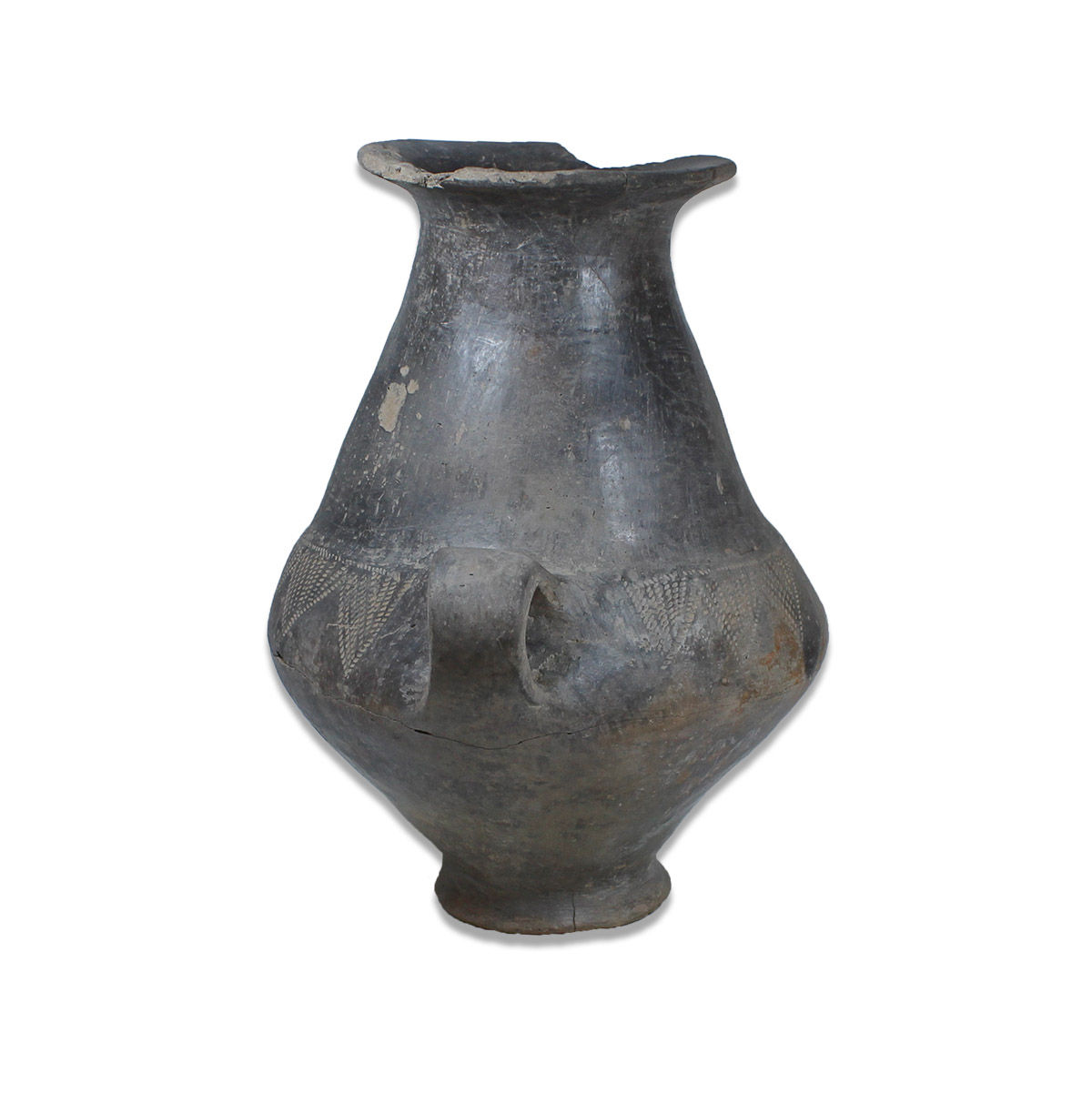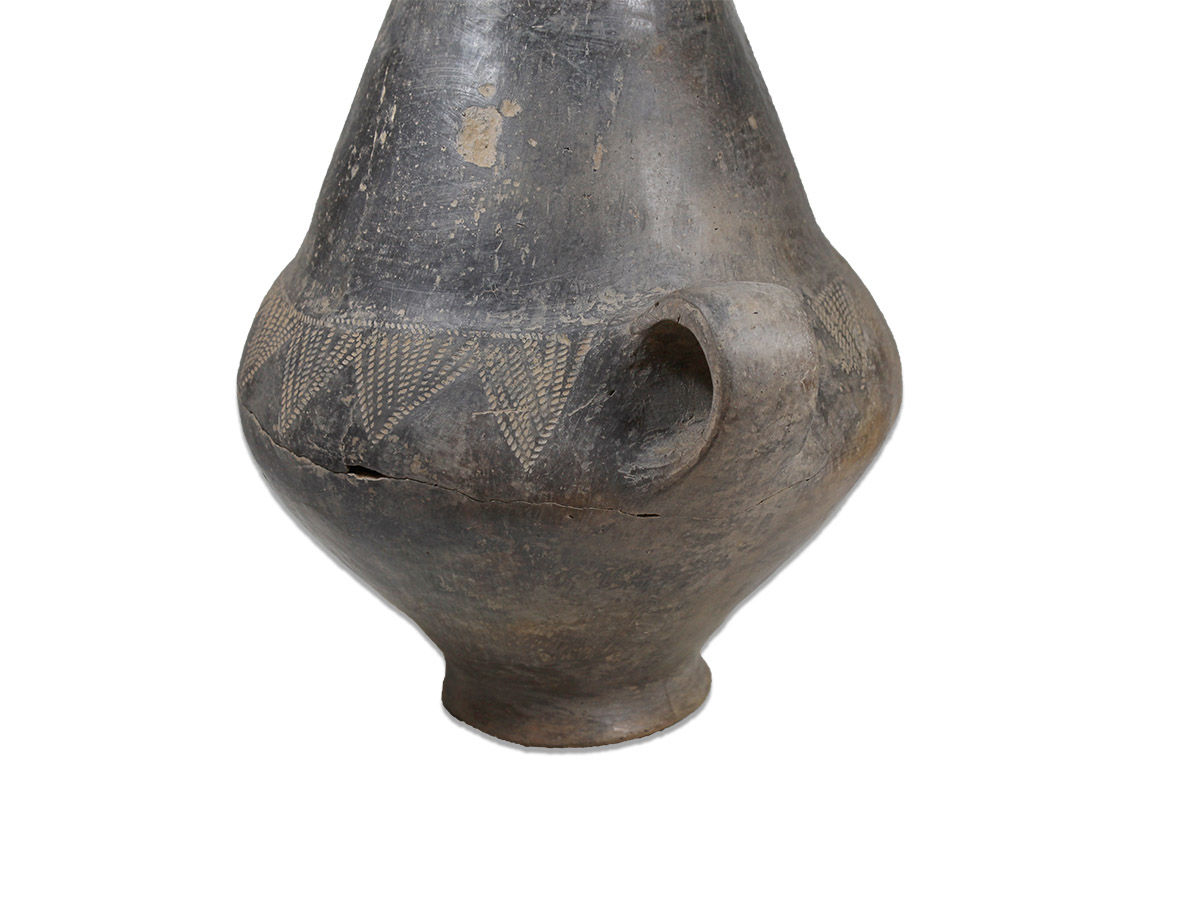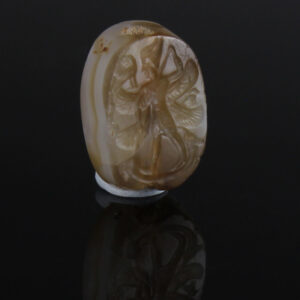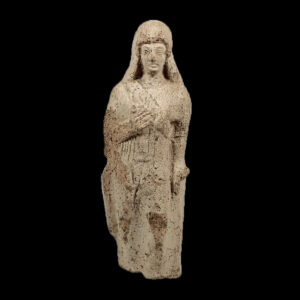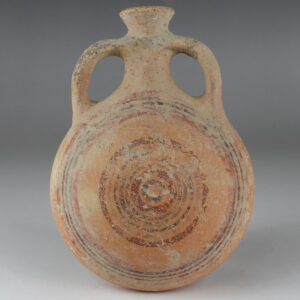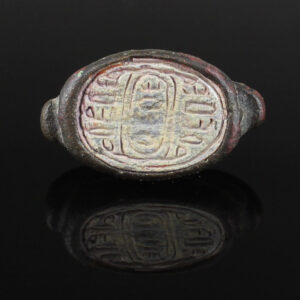Description
| ITEM | Biconical cinerary urn |
| MATERIAL | Pottery |
| CULTURE | Iron Age, Villanovan |
| PERIOD | 7th Century B.C |
| DIMENSIONS | 210 mm x 140 mm |
| CONDITION | Good condition, repaired, see pictures |
| PROVENANCE | Ex Dutch private collection, acquired between 1960 – 1980 |
The burial characteristics relate the Villanovan culture to the Central European Urnfield culture (c. 1300–750 BC) and Celtic Hallstatt culture that succeeded the Urnfield culture. It is not possible to tell these apart in their earlier stages. Cremated remains were placed in cinerary urns, specifically in biconical urns and then buried. The urns were a form of Villanovan pottery known as impasto. A custom believed to originate with the Villanovan culture is the usage of hut-shaped urns, which were cinerary urns fashioned like the huts in which the villagers lived. Typical sgraffito decorations of swastikas, meanders, and squares were scratched with a comb-like tool. Urns were accompanied by simple bronze fibulae, razors and rings.


